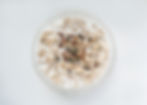
To stay healthy, our immune system needs Vitamin D. Vitamin D helps the body to absorb calcium, and together, these build strong and healthy bones. Vitamin D also inhibits the release of parathyroid hormone, which contributes towards the resorption of bone tissue. Vitamin D has a role in the immune system and muscle function. The easiest way to get Vitamin D is through sunlight exposure. Even then however, not everyone absorbs it.
Did you know 50% of the world's population do not get enough sun due to various reasons, and around 40% of the population of the USA have been found to lack vitamin D. The leading cause of Vitamin D deficiency and insufficiency is that people spend more time indoors, wear sunblock outdoors, and have a nutrient dense diet.
The Daily Allowance (RDA) of Vitamin D is 600 IU (15mcg) per day from foods. If you don't get enough sunlight, your intake should likely be closer to 1,000 IU per day If someone lives some place where sun exposure is low/not possible, their required value for vitamin D3 intake via food raises to 1,000 IU. Below we mention some food sources of vitamin D, which can help you complete your daily requirement of Vitamin D.

OILY/FATTY FISH & SEAFOOD: A popular fatty fish, salmon, is an excellent source of vitamin D. United States Department of Agriculture states that 100 grams of salmon serving, approximately 3.5 ounces, contains 685 IU of Vitamin D in the upper limit and 361 IU in the lower limit. Wild salmons have been found to contain 1300 IU Vitamin D per 3.5 ounces in the upper limit and 988 IU in the lower limit. Fatty fish like herring containing 1628 IU in fresh form, and 680 IU in pickled form. Sardines containing 272 IU in one serving, mackerel containing 360 IU per serving and halibut containing 600 IU of vitamin D, are other perfect sources for the nutrient. Swordfish contains 706 IU per serving. This gives 117% of a person’s RDA.

MUSHROOMS: The only plant-based source of Vitamin D is mushrooms. Mushrooms are the choice of vitamin D intake for vegetarians and those who do not like seafood. Mushrooms synthesize their own Vitamin D upon exposure to sunlight/UV light. Humans produce Cholecalciferol (D3 subtype), and mushrooms produce Ergocalciferol (D2 subtype). Both subtypes raise the levels of circulating Vitamin D. Wild, raw maitake mushrooms provide 562 IU of Vitamin D per 50 grams. Shiitake mushrooms dried contain 154 UI per 100 grams. The main thing to look for while purchasing Vitamin D enriched mushrooms is a trusted supplier, like a grocery store or a farmer, so that you don't get booby-trapped into poisonous varieties. Commercially grown mushrooms, since nurtured in dark, have very little Vitamin D2 or Ergocalciferol.

FORTIFIED FOODS: These are the foods that do NOT naturally contain Vitamin D but are fortified or are strengthened with the nutrient to provide the RDA for people. Vitamin D fortified Cow’s Milk: Usually, cow's milk is fortified to contain almost 130 IU of Vitamin D per 273 mL (1 cup), which constitutes about 22% of person’s RDA. Vitamin D fortified Soy Milk: Vitamin D is mostly an animal-based Vitamin. Therefore, vegans might not opt for milk from animals. Plant-based substitutes, such as soy-milk are fortified with Vitamin D and other minerals to provide their RDA. One cup or 273 mL of soy milk contains 99-199 IU of Vitamin D.

Cereals and Oatmeal: Instant oatmeal and several kinds of cereal are also enriched with vitamin D. Half a cup of these can provide 55-154 IU of Vitamin D, making around 26% of the RDA od the nutrient. TOFU: Tofu, also called as “bean curd”, is formed by the aggregation and pressing of soy milk into solid white blocks of different firmness: silken, soft, firm, or very firm. Tofu is a great source of several vitamins and minerals. This for sure, includes Vitamin D. 1/5th a block of raw, unrefined and fortified tofu has 120 IU of Vitamin D. Lite Silken Tofu has 21% the RDA of Vitamin D, and firm tofu has 14% the RDA of Vitamin D. One can use tofu in a variety of dishes. You can scramble it and/or have it on toast, or make curry for lunch using tofu.

ORANGE JUICE:
Some folks with either lactose intolerance or milk allergy can not fulfill their RDA of Vitamin D via milk sources. For them, some brands fortify orange juice with Vitamin D and minerals such as calcium. A cup of such a fortified orange juice provides 142 IU or 24% of the RDA of the nutrient. Some orange juices can be fortified with up to 1000 IU of Vitamin D. These orange juices not only contain Vitamin D, they also contain Vitamin C, Potassium, Calcium and folic acid.
Other Sources:
• certain types of yogurt
• canned tuna
• oysters
• shrimps
Make sure you complete your Required Daily Intake of Vitamin D and other nutrients to stay healthy.

